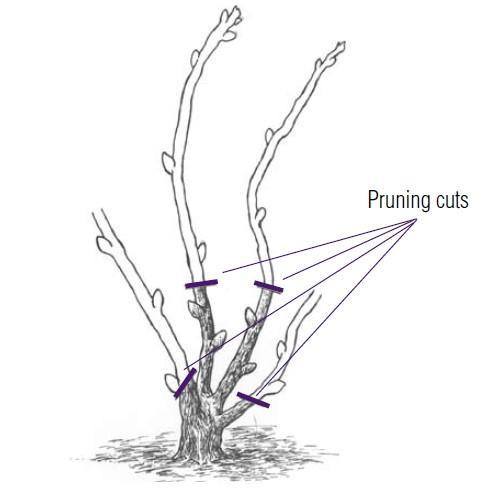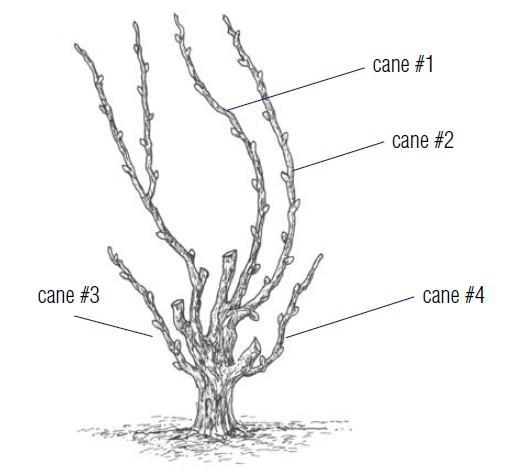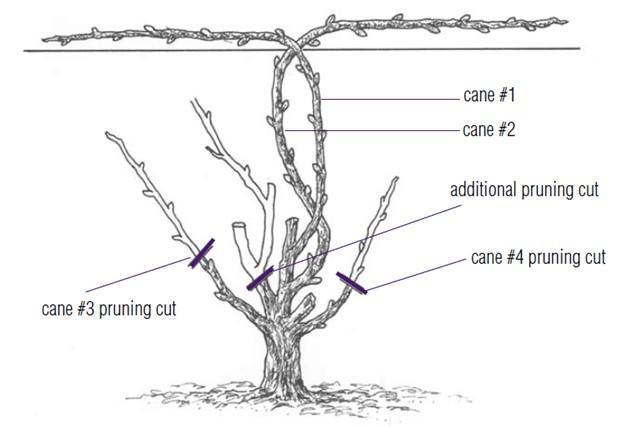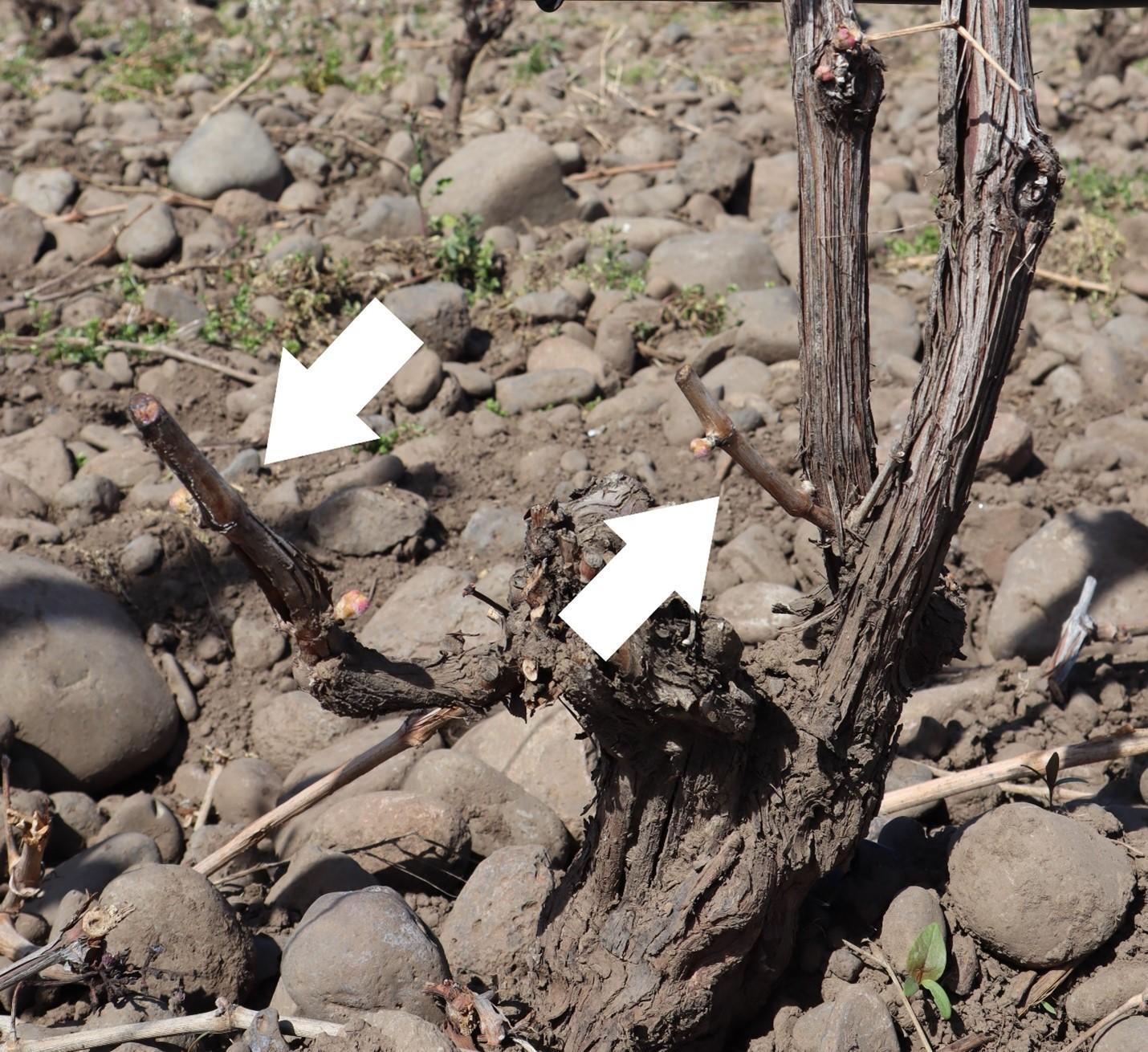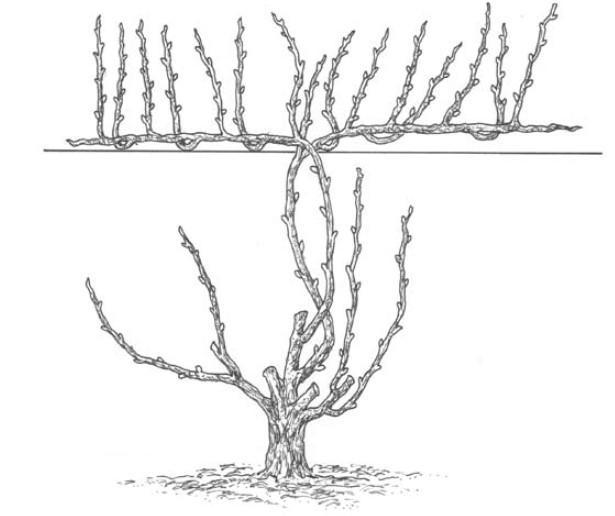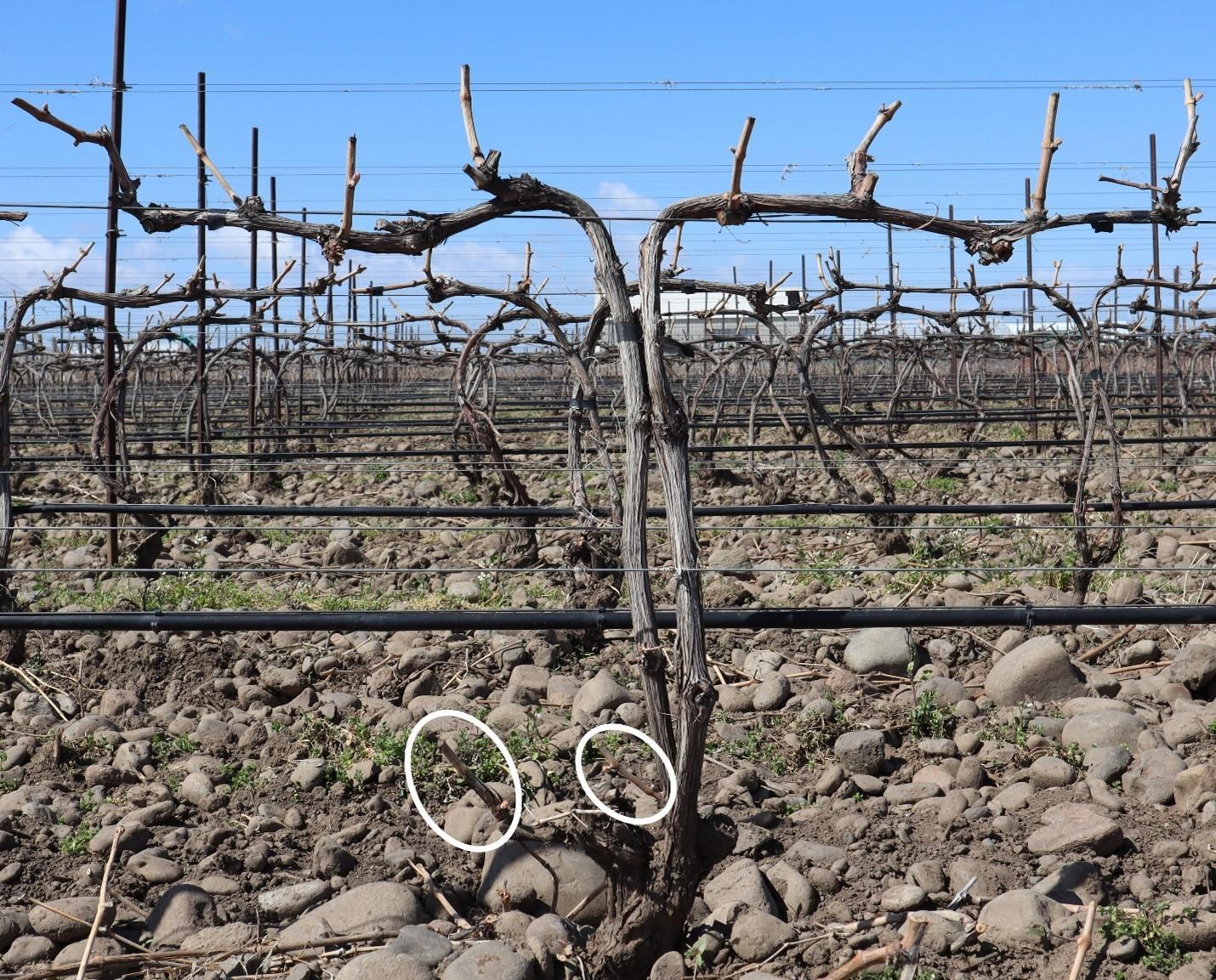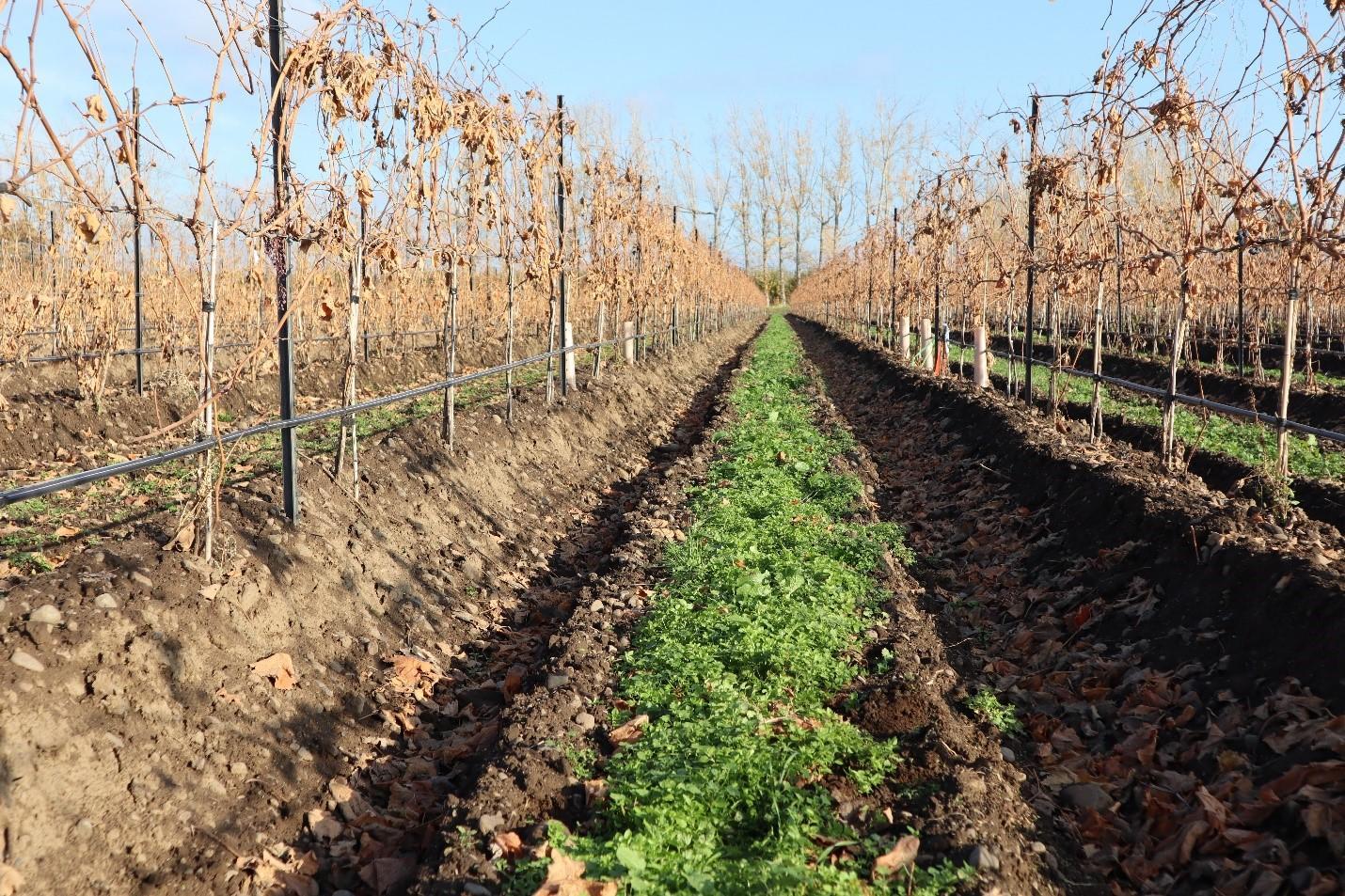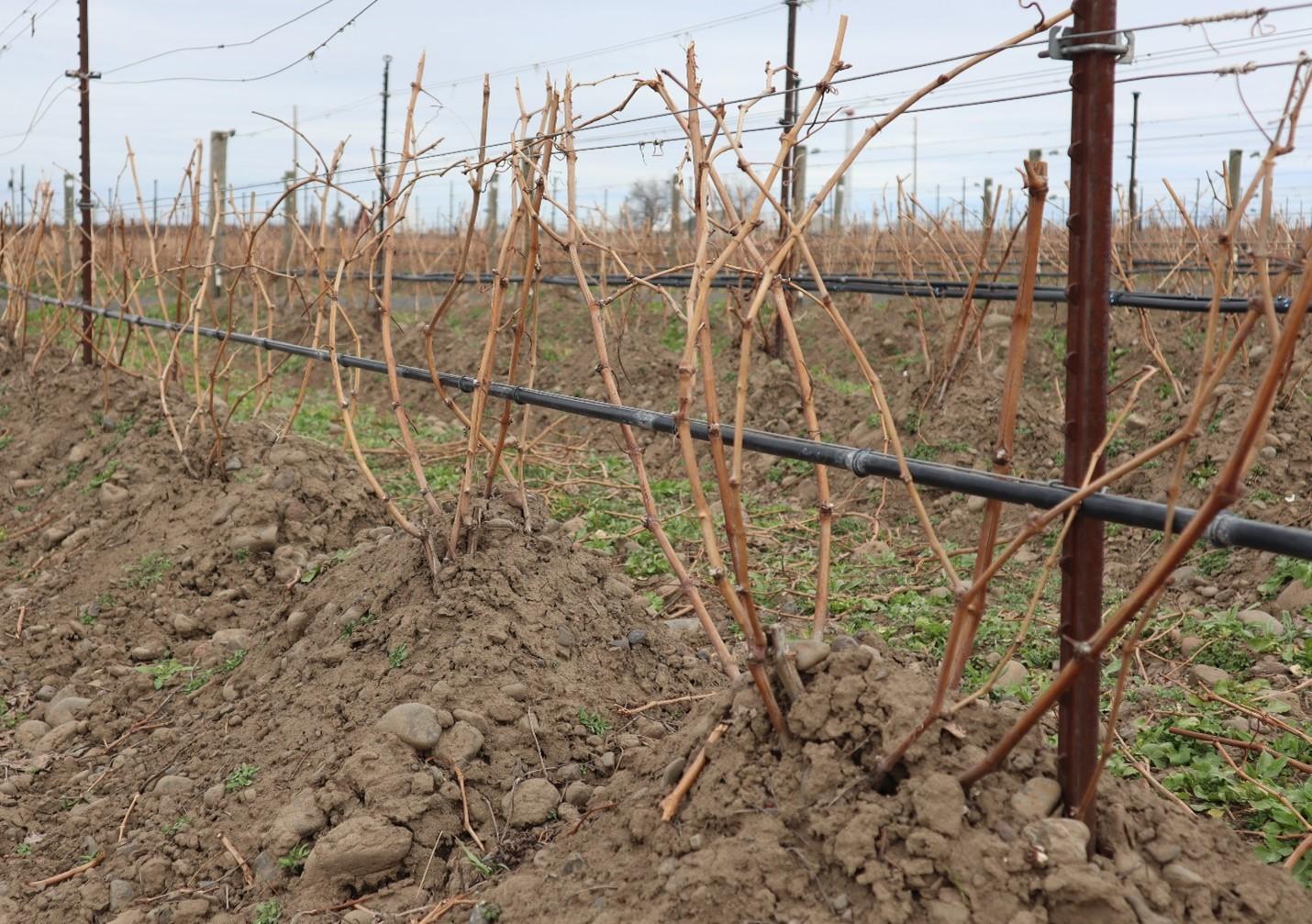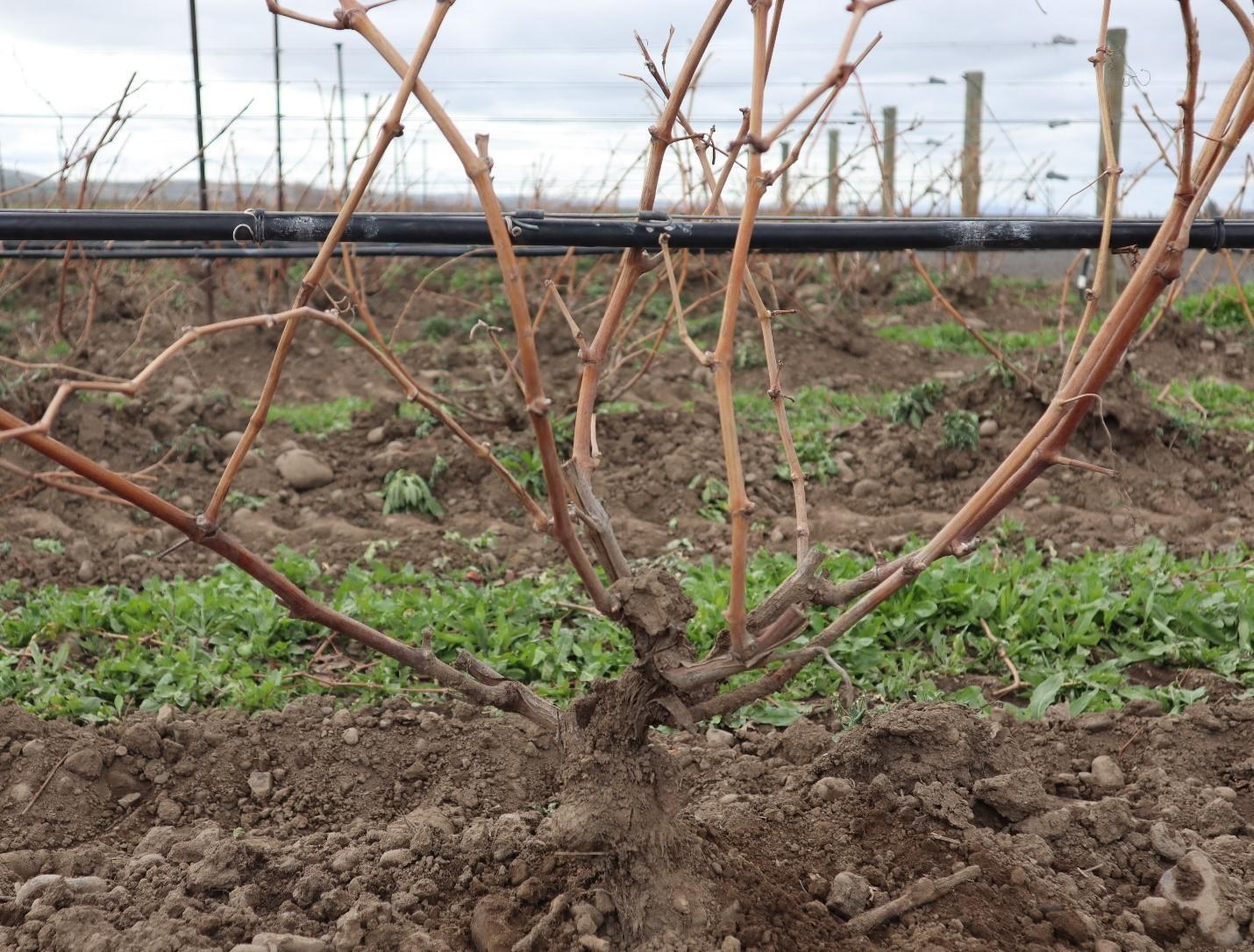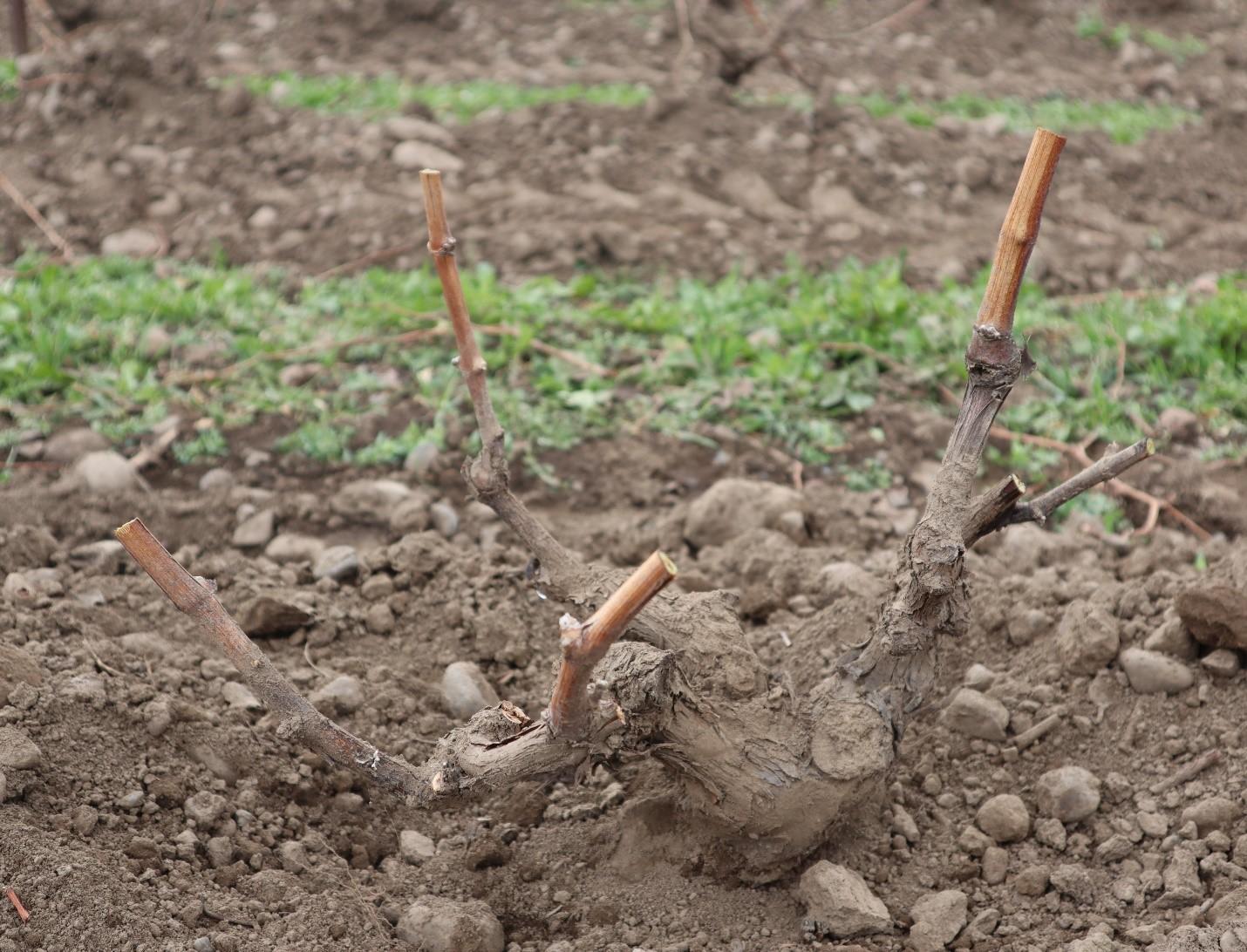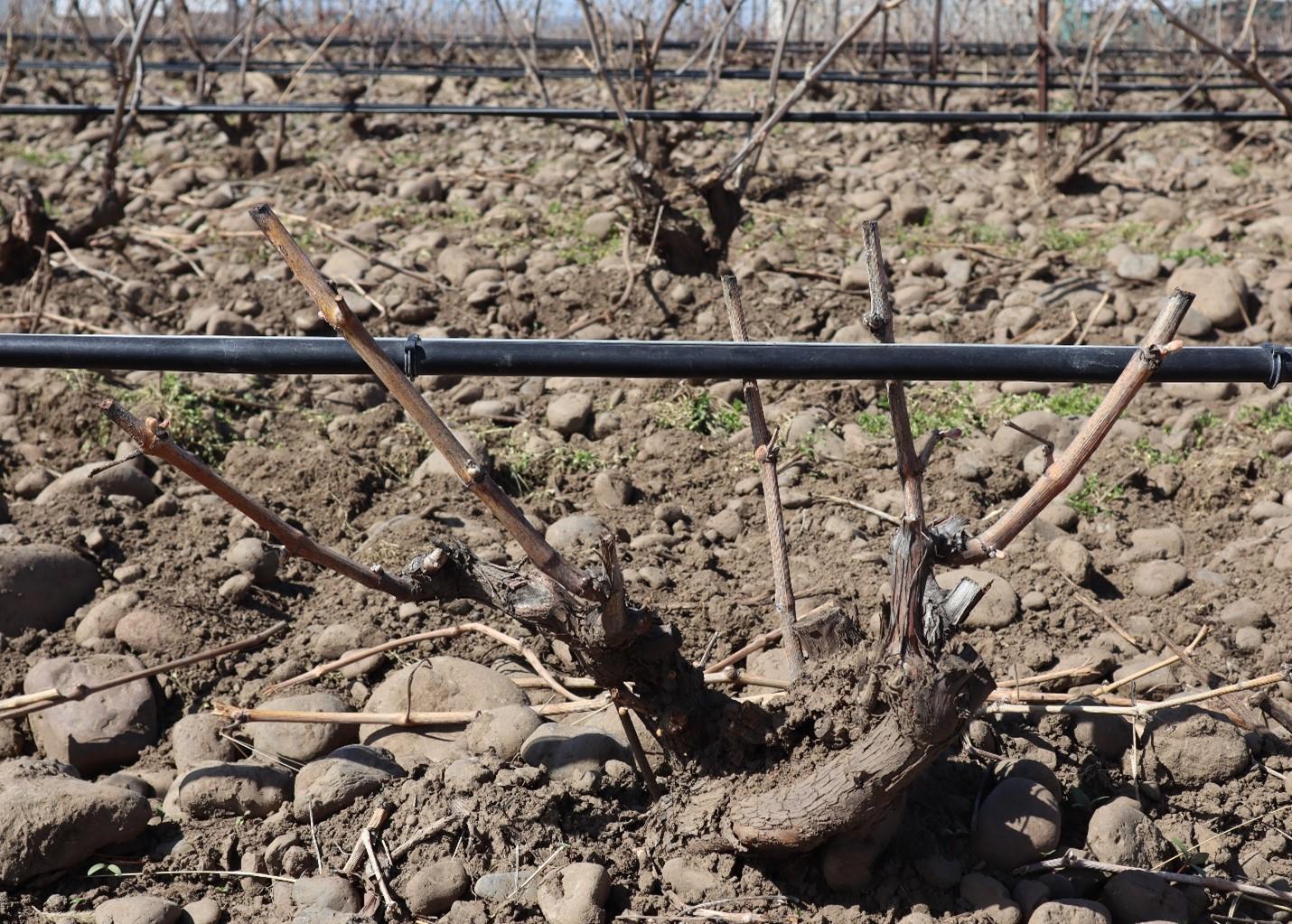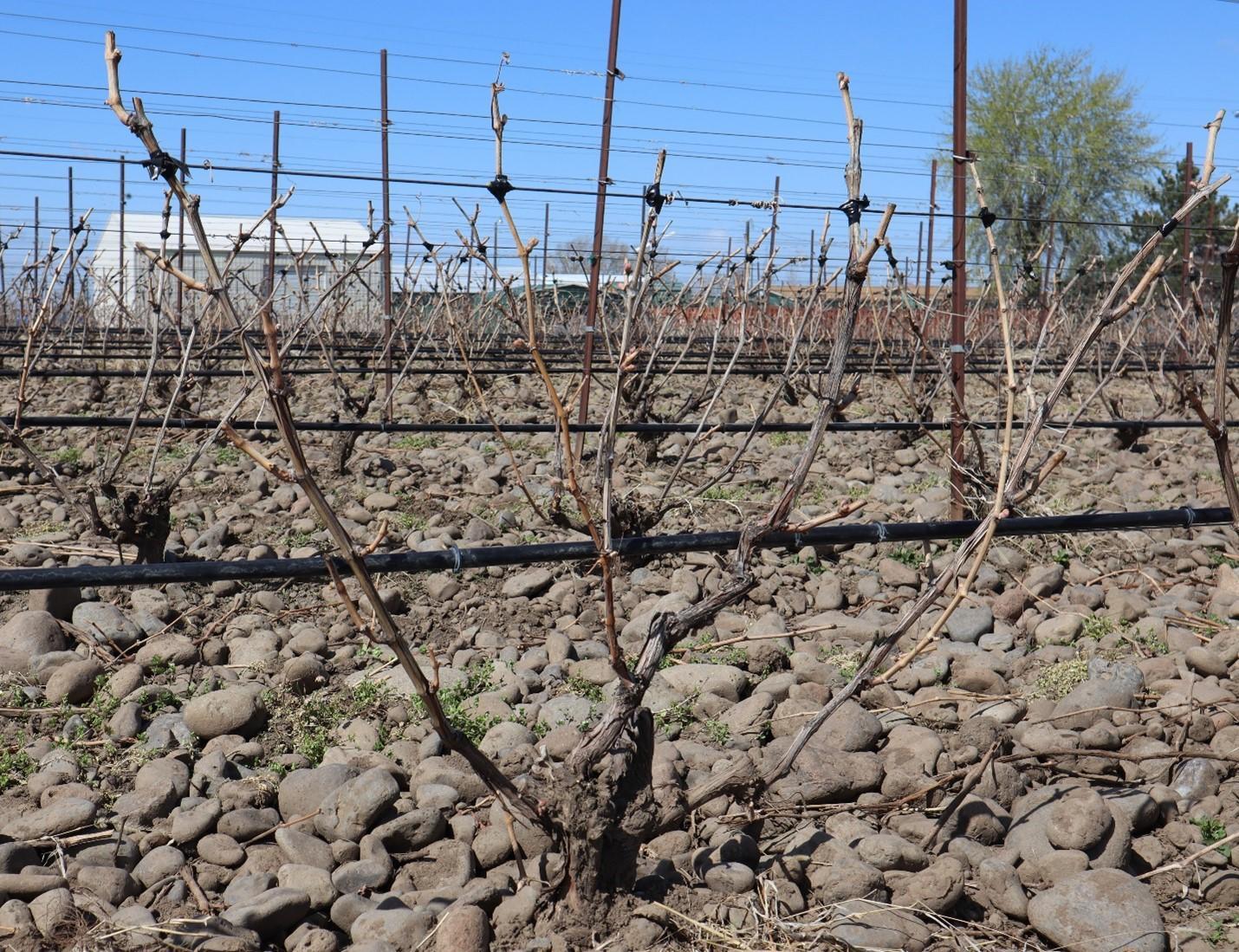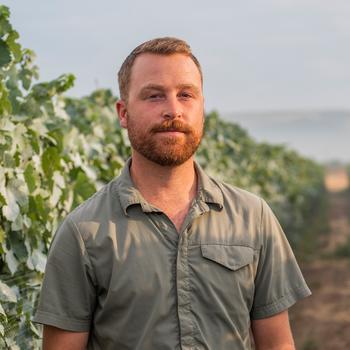Wine grape growing regions in the Pacific Northwest regularly experience low winter temperatures that can cause vine injury or death. Grapevines can withstand cold temperatures during dormancy; however, tolerance varies by cultivar and tissue type (for example, buds, canes and trunk). Maximum midwinter cold hardiness for buds of common Vitis vinifera cultivars in this region range from minus 14.3°F to minus 7.4 °F. The USDA Cold Hardiness Zones across the Pacific Northwest range from 8b (average annual extreme minimum winter temperatures from 10–15°F) in the Willamette Valley, to 6a (average annual extreme minimum winter temperatures from minus 10°F to minus 5 °F) in the Yakima Valley.
Therefore, grapevine buds are at risk of cold injury in some Pacific Northwest growing regions, even at maximum cold hardiness. However, the buds may not be able to tolerate the same level of cold temperatures throughout the entire dormant period. Grapevine bud cold hardiness is influenced by air temperature and vine physiological changes. Bud cold hardiness is lower during early and late stages of dormancy in early and late winter. The WSU Grapevine Cold Hardiness Model is a useful tool for estimating bud cold hardiness during dormancy.
Multiple production strategies improve grapevine cold hardiness or reduce potential grapevine exposure to cold temperatures during dormancy. Many of these strategies are outlined in the WSU Extension publication Assessing and Managing Cold Damage in Washington Vineyards (EM042E). A fundamental approach to protecting vines from cold injury is to adopt training methods that protect vines from cold injury. This publication describes two such training methods, how they work and how they are best adopted in the Pacific Northwest.
Cane burial
In areas where vine cold injury is an annual risk, such as vineyards located on the valley floor, cane burial can protect fruitful buds from low temperatures. This technique can be used for vines that are cane or spur-pruned, trained to different head heights or with multiple trunks.
This process uses the soil to insulate 1-year-old canes that contain fruitful buds and prevent injury by rapid temperature changes or temperatures that fall below cold hardiness thresholds. Two to four canes are maintained at the base of the vine and buried in winter for renewal if the above-ground trunk or cordon is injured.
Cane burial is labor intensive and should be considered before planting a vineyard. Training vines using a bilateral system with cane burial is described below.
First season
- During training in year 1, select four green-growing shoots that you want to train and lay them out on the lowest available trellis wire (this could be the irrigation dripline wire). There is no need to affix these shoots to this wire, as they will be buried in step 3.
- After the first hard frost in fall, cut a V-trench approximately 4 inches deep into the soil parallel to the vine row. Make the trench as close to the trunks as possible without damaging the trunks. A trench is most effectively cut with a tractor and plow implement.
- After trenching, pull down all four canes and lay them into the trench. Cover the entire vine with soil.
- As an alternative to cutting a V-trench, soil can be hilled over canes. This is most easily accomplished by using a disc to lift soil from the alleyway onto the vine row.
- After the last chance of damaging cold temperatures in the spring and prior to bud break, lift the canes from the soil. Prune the two strongest canes to two-bud spurs and prune out the remaining canes (Figure 1). To determine how cold hardy the vines may be in late winter for your location, see the WSU Grapevine Cold Hardiness Model.
Second season
- Train (for example, tuck or affix) the four shoots that grow from the remaining buds upright to the training wire.
- Ensure healthy growth of the vine by providing adequate water and nutrition given your location. Do not apply too much fertilizer, particularly nitrogen, or water as this can cause excessive growth and reduce cold tolerance in winter.
- In late summer, lay all four shoots on the lowest wire.
- In late fall, repeat steps 2 and 3 or 4 from first season.
- After the last chance of damaging cold in the spring and prior to bud break, lift the canes from the soil. Select two viable canes (Figure 2, Nos. 1 and 2) and train them on the training wire (Figure 3).
- Prune the two additional canes (Figure 2, Nos. 3 and 4) down to two buds each (Figures 3 and 4). These buds will produce four new canes. These will serve as the canes that will be buried at the end of the growing season. Remove any additional canes at the base.
Third and subsequent seasons
Each year, allow two to four new shoots to grow from the base of the trunk (Figure 5). Follow the burying, lifting and pruning steps described above. At this point, vines can be trained to either a cane or cordon system. The cane burial process is identical for both systems.
If there is a damaging cold temperature event, these canes can be used to retrain the trunk, fruiting canes or cordons. Do this by cutting back the injured trunk(s) to a couple of inches above the point where the buried canes are attached. When lifting buried canes in the spring, choose the two best canes for use as replacement canes to re-create the trunk and cordon. Prune the other two lifted canes to two buds each. The four shoots that grow from these two-bud spurs will become the replacement canes to bury in late fall. If there isn’t a cold event or injury to vines, two of these buried canes should be pruned back to two buds each and the other two canes completely removed (Figure 6).
Considerations
Although this technique insulates buds on buried canes from rapid temperature changes in winter, there are some disadvantages:
- Cane burial is labor intensive and can only be partially mechanized. You can use a plow implement to cut the V-trench and discs to help bury and partially unbury vines. However, canes must be partly laid, buried and unburied by hand. Costs vary but are lower on light-textured soils with partial mechanization of burial and unburial.
- Fall rains may hinder traffic and make the vineyard floor unworkable.
- It is not always necessary to bury whole canes. Hilling soil to cover a few buds on each of the retained canes can reduce the time required to retrain injured vines. This is particularly useful for grafted vines that cannot be retrained from the rootstock (growth from the ground) (Figure 7).
- Avoid herbicide use after budbreak to prevent damage to the shoots retained at the base of the trunk.
Low-head training systems (own-rooted and grafted vines)
Sometimes referred to as a spur-pruned rose system (Figure 8), a low-head training system can protect buds from winter cold injury. A similar system in the Pacific Northwest is a nearly trunkless goblet training system, sometimes referred to as mini head training. Vines trained using low-head systems are buried like cane burial, but soil is mounded higher to protect the entire head of the vine and basal buds on canes. This can protect the graft union of grafted vines if the entire graft union is covered. Another low-head training system, called modified fan, is similar to mini head training, but the spurs are spread out along a vertical plane.
These training systems also have specific trellising requirements, and, like cane burial, their adoption needs to be considered prior to vineyard planting.
First season
- After planting, train all shoots upward and attach them to the catch wires as they grow. No single trunk is formed; a vine head of multiple spurs will develop close to the ground (Figure 8a).
- After the first hard frost in fall, mound soil around the base of the vine before temperatures fall below 20°F (Figure 8b). The soil should be deep enough to cover the entire vine head and should be at least 6 inches deep on all sides of the vine head (Figure 9). This layer should be maintained the entire winter until the soil is removed.
- After the last chance of damaging cold temperatures in the spring and prior to bud break, remove the mounded soil (Figure 10). A weed knife or similar undervine implement can be useful to remove most of the soil, but the remaining soil is typically removed by hand. When using a weed knife, pencil rods placed at each vine may be required if the trunk is too short to activate the sensor.
- Assess bud viability, identify canes to retain and prune vines to the appropriate number of buds per spur according to canopy and yield management goals.
Second and subsequent seasons
- Train the new shoots from the spurs upward on the trellis in a fan or goblet arrangement, depending on the preferred training system.
- After the first hard fall frost, mound soil around the vine head as described for the first season (Figures 8b and 9). Soil can be mounded high enough to cover three to four buds on the dormant canes.
- After the last chance of damaging cold temperatures in the spring and prior to bud break, remove the mounded soil (Figure 10).
- Prune four to six canes to two- to four-bud spurs depending on cultivar and vine vigor. Ensure that spurs are spaced out and arranged in a goblet-like fashion for mini head trained vines (Figure 11) or in a fan arrangement for modified fan systems (Figure 12).
Considerations
- Use three or four trellis catch wires. Position the lowest wire at 15–18 inches above ground and the second around 36 inches. Add one or two higher trellis wires to support continued shoot growth. The number and length of new shoots, and hence the number and height of trellis wires, depends on cultivar vigor, row spacing and vineyard location.
- This training system is suited for own-rooted vines and spur pruning. Low-head training systems are possible for grafted vines, but a short trunk and low graft union height is required to ensure that the graft union is protected.
- Low-head training systems can make manual harvest ergonomically difficult due to the low fruiting zone height.
- The cost of vine burial, unburial and pruning is equal to or more expensive than cane burial.
- Depending on the location, this low fruiting zone can place the vines at higher risk of developing Botrytis bunch rot and grapevine powdery mildew.
- Modified fan systems may vary in the arrangement of canes and/or spurs. Figure 13 shows a vine trained to a traditional fan system rather than the modified fan in Figure 12. A modified fan system compresses the fruiting zone and retains a smaller perennial vine structure than traditional fan systems.
Conclusions
Cold temperatures during vine dormancy can pose a severe threat to the successful establishment and maintenance of grapevines. This is especially true of Vitis vinifera cultivars (such as European wine grape cultivars) favored in the Pacific Northwest. Site selection is the most effective way to avoid future cold injury to these vines.
Training methods can help reduce the risk of vine injury and crop loss in established vineyards with high winter cold injury risk. The technique of burying canes or heads has proven successful in several wine grape growing regions of the United States, including the inland Pacific Northwest. Regardless of the specific method, cane or head burial is labor intensive and should be thoroughly considered.
For more information
Modeling dormant bud cold hardiness and budbreak in twenty-three Vitis genotypes reveals variation by region of origin. American Journal of Enology and Viticulture 65:59-71.
Assessing and Managing Cold Damage in Washington Vineyards (EM042E). Washington State University Extension.
Growing Grapes in Wisconsin. University of Wisconsin Extension, Cooperative Extension Publishing. Madison, WI.
Washington State University Grapevine Cold Hardiness Model.
Vine Training Systems for Winegrape Production in Cool Climates. Michigan State University Extension. SWMREC Report #10.
For more information on wine grape production, visit the OSU Extension Service catalog and the WSU Extension viticulture page.
